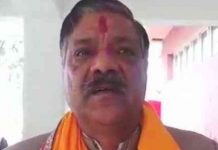Annurag Sharma, and Johny ML have brought unnoticed art to the masses. Can they sustain it as a truly democratic model? Aradhna Wal finds out

Photo: Shailendra Pandey
HIGHLY ANTICIPATED and massively scaled, the United Art Fair (UAF) began on the wrong foot. On 27 September, at New Delhi’s Pragati Maidan, well-heeled guests were wandering around slightly lost. Almost 600 works of art had been displayed without the artists’ names. The harried organising team muttered something about mismanagement. Curator Johny ML had an explanation at hand: “I don’t want people to look for established names. Let them stumble across works that please or surprise them.” Founder Annurag Sharma concurred, “I want people to form an emotional attachment to works they like, not look for artists they know of.”
UAF’s first edition pegged itself on the democratisation of contemporary Indian art since its inception, calling itself the world’s first “artist-driven art fair”. The selected artists paid no participation fee for the four days (27-30 September). Galleries, who normally pay for space, were kept out of the proceedings — a move that pleased some and perplexed others.
The venue housed a collection of masters’ works — Akbar Padamsee, MF Husain, Anjolie Ela Menon; contemporary established artists — Chintan Upadhyay, Brinda Miller, Subodh Kerkar; and hitherto unknown talent from across the country. Johny travelled to 15 cities, hunting in small art institutes and studios. One centrepiece, a life-size fiberglass replica of a luxury car, worth 45 lakh, was by a young Delhi College of Arts student, Neeraj Rawal.
As the curatorial mastermind, Johny had organised the space like a mini-city. The maze-like-streets were named after great artists of yore, such as Rabindranath Tagore Street and Amrita Sher-Gil Street. Turn left, you were confronted by Gandhi depicted in a series of modern landscapes; turn right and there were photographs of ants crawling over naked human bodies.
“There is shock value and some inherent criticism of art in the way I have curated. We have many first-time buyers picking up works that please the eye. But I want to educate them. Why are they looking at one work in a particular way? Why should we hold some things sacred?” asked Johny.
Yet, he, as the puppet master, could see that larger picture that escaped many. The street names were random. It made no sense to put some artworks under Tagore’s name and not others. An educated viewer would be tempted to look for symbolism that wasn’t there; a less-informed one would believe that there was some. Raqs Media Collective curator Monica Narula expressed her reservation: “Selection is opinion-based.
But to curate is to provoke questions about what is at stake. It’s about custodianship. How democratic is one man managing the space for hundreds of artists, displaying them according to his vision?” She questioned the exclusion of galleries. “The fair takes 50 percent of the sales proceedings, just like galleries. Isn’t it functioning like a large gallery? Galleries promote artists over a sustained period of time. Here, the spotlight lasts four days.”
Sharma put the figure at 35 percent, saying they used the money to frame and transport the artwork for many artists. He also plans to take 100 artists, selected by the fair’s jury, to different cities and abroad.
‘I don’t want people to look for big names. Let them stumble across works that surprise them,’ says Johny
Goan artist Subodh Kerkar happily supported Sharma and Johny: “I’ve never displayed at the India Art Fair as I’ve never been associated with a gallery that would pay for space. If you’re not with a gallery, you’re out.” There is also the danger that market-driven galleries drop artists when they find the next flavour of the year.
Delhi-based art critic Ina Puri was sceptical, but on board. She warned, and Sharma agreed, that commerce and galleries would come into play at some point in the future. As a launching pad, the UAF is a worthy endeavour if it proves its credibility over time. Both the founder and the curator are aware that they have to build a brand.
So far, the inauguration has proved to be a success. As confusing as the first impression is, the fair comes together, organically, over the four days. Just like a city teeming with life, there was a method to Johny’s madness.
Aradhna Wal is a Sub-Editor with Tehelka.
aradhna@tehelka.com











